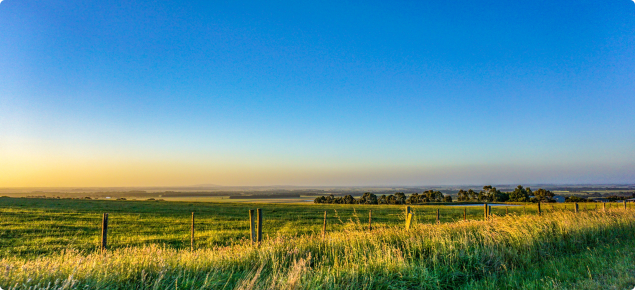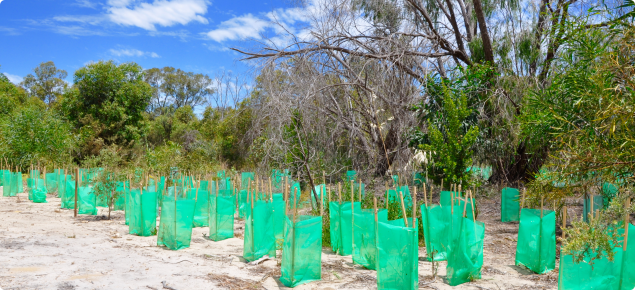Economic Analysis Summary
This analysis provides estimates of the carbon sequestration – expressed as tonnes of carbon dioxide equivalents (tCO2-e) – and potential annual value of carbon offsets for a range of carbon farming activities. We used a range of prices per tonne of carbon dioxide to account for the uncertainties surrounding offset price.
Only returns from the sale of carbon offsets are considered: the value of any additional environmental, productivity or other benefits are not shown. The analysis assumes that carbon farming methodologies will be developed and approved, although in reality it may be years before some methodologies are developed and there are costs to develop project-specific methodologies.
Where there is a substantial establishment cost for a carbon farming project, we recommend an investment or cost-benefit analysis to determine the profitability of the project.
Gross margin analysis, used in annual agriculture, is not suited to long-term carbon farming projects. Gross margins are the cash inflow minus cash outflow. Carbon farming project costs will vary by project type and size, and the level of annual costs and income may be inconsistent.
Because some of the costs associated with project registration and set-up are 'fixed' (Table 6.3), it makes financial sense to aggregate projects to share costs. The high cost of physically measuring carbon stores or emissions also makes it likely that methodologies will use modelling rather than direct measurement where possible.
See Tables 6.1 and 6.2, Chapter 6 Economic analysis in Carbon farming in relation to Western Australian agriculture for information on:
- the mean annual value ($/ha/y) of carbon offsets generated from sequestration activities over the period from establishment until equilibrium is reached
- the mean annual value ($/y) of carbon offsets generated from emissions avoidance activities
Analysis on current costs should be made.
| Project type | Establishment | Annual | Audit | Brokerage ($/tCO2-e) |
|---|---|---|---|---|
| General | $1 500–50 000/project | 0 | 0 | 2 |
| Cattle (500 head) | $6 500/project | $2 500/project | $2 500/project | 0 |
| Revegetation | $100/ha | 0 | $10/ha | 1 |
tCO2-e = tonne of carbon dioxide equivalents
Source: Carbon farming in relation to Western Australian agriculture - Bulletin 4856 (PDF 1.4MB).
Information is available for some activities relating to the capital cost ('sunk cost') of establishing the activity and ongoing operating costs. Available costs are in Table 6.1 and Table 6.2. These capital costs need to be included when estimating the return or profitability of investing in various activities.
There are economic and other risks in carbon farming
We recommend that anyone considering a carbon farming project seeks independent financial and legal advice about the particular circumstances of the project. Investors and advisers need to assess the risk/return trade-off of the project before investing.
Factors to consider include:
- sequestration rates (in tonnes or ACCUs)
- carbon price forward estimates
- cost of establishment and maintenance
- experience and knowledge of carbon farming requirements.
Additionality is a risk to methodology developers or those planning to use a particular methodology in future: if an activity is widely adopted and deemed to become 'common practice' then that activity and related methodologies may not be eligible to generate offsets for new projects.
Permanence permanence obligations for sequestration projects include:
- having to maintain carbon stocks for 25 or 100 years:
- natural events such as drought, fire and disease may destroy the plantation
- projected climate change may reduce sequestration rates
- the opportunity cost of a permanent land-use change may be negative:
- technology and market changes may mean that other opportunities become much more profitable
- effect on capital gains
- income is generated for 5-15 years: when equilibrium is reached there will be no further carbon sequestered and no income
- the permanence obligation rests with the landowner.
Landowners wanting to participate in carbon farming could reduce risk by engaging carbon project developers to provide knowledge, business acumen and managerial capacity, ability to pool carbon projects and capital investment.
Further Information
Download the Carbon farming in relation to Western Australian agriculture - Bulletin 4856
For queries, please email CarbonFarming@dpird.wa.gov.au.
Click here to subscribe to DPIRD's Carbon Farming News.



